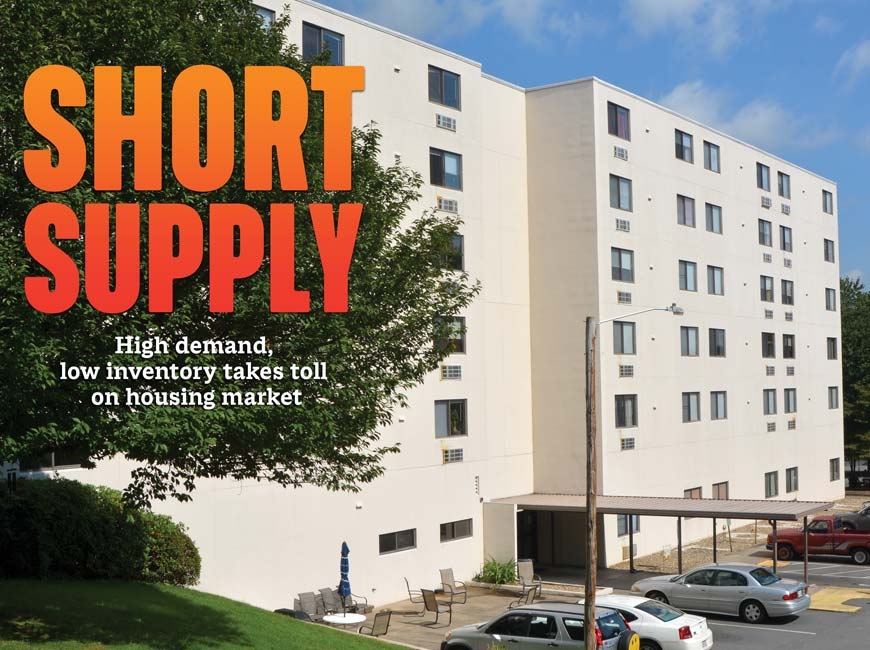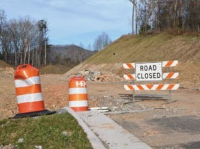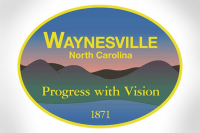New players join affordable housing fight
 The housing market in Western North Carolina is reaching a boiling point as homes are selling at record speed and at record prices and inventory remains critically low. Brian Cagle, new chairman of the Waynesville Housing Authority, hopes the organization’s new strategic plan will allow the board to assist in the development of more affordable housing units.
The housing market in Western North Carolina is reaching a boiling point as homes are selling at record speed and at record prices and inventory remains critically low. Brian Cagle, new chairman of the Waynesville Housing Authority, hopes the organization’s new strategic plan will allow the board to assist in the development of more affordable housing units.
The affordable housing crisis in Western North Carolina isn’t anything new, but it is entering a dangerous new phase due to ever-increasing home values, limited supply and a red-hot real estate market that has refused to use the Coronavirus Pandemic as an excuse to cool down.
Redoubled efforts by a pair of players — one long dormant, the other brand new — couldn’t come at a better time, because if something isn’t done soon, according to vice president and managing broker at Waynesville’s Beverly Hanks and Associates Brian Cagle, there will be serious repercussions that could change the very landscape of the region.
“This community is going to become a trailer park,” said Cagle. “My hope is that we can come together as a community and have a common vision to address it, because it’s going to take everybody working together.”
The Problem
For more than a century, Western North Carolina’s scenic vistas have drawn visitors from across the region, the state and indeed the world.
As outdoor recreation-based industries quickly sprang up to serve them, lodging, hospitality and entertainment venues soon followed and were in turn followed by all the industries that support them, from nail salons to retail shops.
Related Items
In any such service-oriented economy, those workers — many seasonal and most among the lowest earners in any industry — need affordable places to live near their jobs, but WNC’s mountains can be both blessing and curse; developable land is at a premium and substantial portions of many counties in the region are owned by the state or the federal government.
Increasingly, visitors become locals, many through second and third homes. That’s kept supply low and driven up prices, which also translates to the rental market. The largest city in the region, Asheville, has had a notoriously quick real estate market for years now, which then exerts pressure on rural neighboring counties.

“We’re selling the most real estate we’ve ever sold,” Cagle said. “The market, I’ve never seen anything like it. It really makes me keenly aware of the need for housing. And it’s not just a local problem. I think that’s important to point out. Everybody’s like, ‘Oh, well, if you can’t find anywhere to live that’s reasonable and you can go somewhere else and look.’ You can’t. It’s a national crisis.”
Economic uncertainty since the March outbreak of COVID-19 merely served as a speedbump for the local real estate economy.
“Closed business took a nosedive as you might expect, which translated into May and June,” said Cagle. “We were all sitting there thinking, ‘Oh my gosh, are we ever going to sell a house again?’ Written business started cranking back up in May and June. June was an all-time record sales month. July beat that. August was another over-the-top kind of month. It’s just mind blowing.”
Data from Charlotte-based Canopy Realtor Association bears that out; in Canopy’s 13-county western region, 10 counties saw more homes sold in July 2020 than in July 2019.
“I think it’s COVID-related. I think it’s concerns about violence in urban areas,” Cagle said. “I think those things mixed together make rural America look pretty darn cool. We’re seeing them come from all different areas. Definitely people that have means that live in urban areas are buying second homes or third homes. They’re buying homes all over the place.”
Two properties listed at more than $3 million went under contract in Brevard last week according to Cagle; although those aren’t the kinds of properties locals are usually looking for, they do diminish supply and push down on the rest of the market.
Cagle said he’s also seeing more people relocating to the area permanently, especially as work-from-home becomes the new norm for many white-collar employers.
“Even the areas from $500,000 to $700,000, they’re getting multiple offers, first day,” he said.
Canopy’s data bears that out, too. In the 13-county region, 10 counties saw an increase in average sale price this past July as compared to July 2019.
Mitchell County’s was a whopping 50 percent. Rutherford County was 47 percent. Even Haywood’s modest 11 percent year-over-year increase was notable in that it’s great for homeowners and landlords, but bad for buyers and renters.
“There’s too much buyer demand,” said Cagle. “You’ve got interest rates at historic lows. The high-end market is cash, but that does help affordability for some people.”
Some, but not all — a common rule of thumb is that borrowers should expend no more than 28 percent of monthly income on a mortgage payment. When comparing prevailing wages and average home sale prices, there’s not a single county in Canopy’s western region in which an average worker could afford a home on their own.
In fact, there’s no county in Canopy’s western region where someone earning twice the average wage could purchase an affordable home. In Jackson, Rutherford and Transylvania counties, it would take triple the average wage to purchase something under 28 percent of income.
With more and more homes selling for more and more money, the supply-side of the market is weakening.
“Right now, we are running out of inventory at an alarming rate. We just crossed over a very interesting number in the last month,” Cagle said. “We now have more properties under contract than are available for sale.”
As of Aug. 28, there were 271 Haywood County properties under contract and 260 units available for purchase, from all price ranges. For buyers looking to spend less than $250,000, only 63 homes were available; buyers looking to spend less than $150,000 could choose from just 13 homes, many of which are trailers.
“We’re not keeping up,” said Cagle. “That’s a real problem. We’ve got to build houses and that’s not something that’s going to happen real quick.”

Help Is On The Way
It’s not as if Cagle is the only one paying attention; a number of local organizations have tried to address the affordable housing crisis in WNC, with little or no results to show for the effort.
In early 2016, Haywood County established an Affordable Housing Task Force, which met, issued a report and outlined some goals, including a call for 400 new affordable housing units to be built over the next decade. Little has come of that.
In early 2019, the Town of Waynesville took concrete steps to address the crisis by designating its Board of Aldermen a redevelopment authority and outlining a “blighted area” near the old hospital on North Main Street.
Those initiatives resulted in tax credits from the North Carolina Housing Finance Agency that made redevelopment of the old hospital into affordable housing units financially feasible for a private developer, but the 54 units — for veterans and the elderly, not working-class residents — will barely make a dent in the dearth of supply.
Throughout that time another entity sat on the sidelines, doing almost nothing to help mitigate the supply issue.
“I think the Waynesville Housing Authority has done good things in the past. Obviously, they’re providing some public housing for people that need it, but as far as providing some leadership in that area we just have kind of abdicated their responsibility. Frankly, that needs to change,” said Cagle, who was recently sworn in as WHA’s new chairman.
The Waynesville Housing Authority’s been around for quite some time. Its mission is to promote and preserve a variety of housing choices for the citizens of Waynesville and to increase public awareness of housing opportunities, needs and concerns.
Comprised of a nine-member board with five-year terms, the WHA is empowered by North Carolina General Statute 157-9 which reads in part:
It is hereby declared that unsanitary or unsafe dwelling accommodations exist in urban and rural areas throughout the State and that such unsafe or unsanitary conditions arise from overcrowding and concentration of population, the obsolete and poor condition of the buildings, improper planning, [and] excessive land coverage … many persons of low income are forced to reside in unsanitary or unsafe dwelling accommodations … there is a lack of safe or sanitary dwelling accommodations available to all the inhabitants … these conditions cause an increase in and spread of disease and crime and constitute a menace to the health, safety, morals and welfare of the citizens of the State and impair economic values … these conditions cannot be remedied by the ordinary operation of private enterprise … there is a serious shortage of decent, safe and sanitary housing in North Carolina that can be afforded by persons and families of moderate income … that it is in the best interest of the State to encourage programs to provide housing for such persons without imposing on them undue financial hardship …
“You almost think, ‘When was this written? Was this written like last week?’” Cagle said.
The statute containing those descriptions of North Carolina’s housing conditions, known as The Housing Authority Law, was written in 1935.
In addition to describing the reasons for its creation, the Housing Authority Law empowers duly constituted housing authorities like Waynesville’s to exercise a broad range of powers. The WHA, Cagle explained, has been in “maintenance mode” for some time now, managing the projects it’s currently responsible for, but little else.
“I think they do a pretty good job keeping the facilities up,” he said. “We’re certainly way ahead of most of the slumlords in town. I mean, you look at our stuff and you look at their stuff, ours looks pretty good.”
Funded almost exclusively by rental fees received from residents and subsidies from the U.S. Department of Housing and Urban Development, the WHA has a healthy balance sheet and significant cash reserves. The most recent yearly audited financials, from September 2019, show the WHA with more than $3.8 million in total assets against $1.3 million in liabilities.
“We get money from all these different governmental entities. There’s two different pots we deal with. One is what’s at the Waynesville Towers, which is USDA, then we have Section 8 site-based housing, which are all the other houses we’ve got around town, down in Nineveh, Pigeon, down on Boyd,” he said. “They send us these big chunks of cash and we’ve got to follow all their guidelines in how that goes out to folks.”
While Waynesville’s relatively progressive approach to public housing has helped thousands over the years, it’s not currently meeting the needs of the community in terms of demand.
“I’m not sure public housing is the solution for our housing crisis,” Cagle said. “It’s government subsidized housing, on and on, forever. We need some of that, but there’s a balance to that for sure. There are housing authorities in the country that have created kind of a separate arm that’s a nonprofit that have been much more involved in building affordable housing. And so that’s certainly something that we’d want to look into, like owner-occupied affordable housing.”
Going back to Cagle’s “trailer park” comment, given current market conditions and WNC’s topography, the market attempts to solves the affordable housing crisis through the use of small manufactured housing units on small rental lots. Cagle doesn’t have a problem with trailers per se, except for a less obvious consequence of their proliferation.
“I’m glad we have them because think of what a crisis we would have in America without them,” he said, noting a low barrier to ownership. “The thing that saddens me about that is that people do not build wealth. They pay sometimes almost the same amount of money for 20 or 30 years, and they have nothing left. They have nothing for their kids versus if they had bought a little house.”
A home is one of the most commonly owned assets by Americans, and as such is one of the largest contributors to personal and generational wealth of American families.
“Those families never had the American dream,” said Cagle. “They’ve never been able to have a place where they could build wealth for their family through home ownership. They build wealth for other people.”
As the WHA moves into a more active role under the leadership of Cagle, it’s not yet clear what approach the organization will take, because you haven’t told them yet.
In July, the WHA signed a letter of engagement with Aprio, a CPA-led advisory firm, to begin working on a strategic plan. Much like the Town of Waynesville’s new strategic plan — set for approval on Sept. 8 after more than two years of work — WHA’s plan will allow for substantial public input.
Unlike Waynesville’s plan, it should be complete in 90 days or so.
“COVID has made it a strange time to do a strategic plan with public involvement, but they’re contacting our stakeholders right now and doing interviews via Zoom,” Cagle said. Stakeholders include the usual milieu of local groups like Mountain Projects, Habitat for Humanity, REACH, EACH and the Town of Waynesville.
Once that’s complete, the WHA will search for a permanent executive director to replace interim Belinda Kahl.
“That’s the next order of business,” Cagle said. “We felt like we needed to complete the strategic plan before we even knew how to build a job description for somebody. We felt like we wanted to bring the community to the table first.”
Another segment of the community is also coming to the table — local Realtors. Back in January, the 300-member Haywood Realtor Association merged with the Charlotte Regional Realtors Association to form Canopy Realtor Association.
“We actually have a larger voice now within the state,” Tom Mallette, a Realtor with Better Homes and Gardens Real Estate Heritage in Maggie Valley told The Smoky Mountain News on Dec. 17, 2019. At the time, Mallette was president of the Haywood Realtor Association. “We’re a very small county, so when I go to a state board meeting, maybe I’m the only voice for Haywood County. Now that we’re joining Canopy, we have 20 times that, basically.”
Another advantage of the merger is that western counties will benefit from all the charitable work Canopy does to promote affordable housing.
“One of the goals was to establish a formal grant program,” said Terri Marshall, executive director of the Canopy Housing Foundation, the charitable arm of CRA. “We already had that program in Mecklenburg and Iredell counties, and when we merged with Haywood, that was one thing they were interested in. The purpose is to fund and address unmet housing needs, and we’ve left that fairly broad intentionally because lots of grassroots efforts not being looked at — everything from helping fix someone’s home, to critical repair needs or new home builds. It really runs the gamut so it’s interesting to see how each group defines that need.”
Cagle serves as the western regional chair of the foundation, which will announce more than $18,000 in funding for local housing advocacy groups on Sept. 8.
“There’s no one organization that can fix this, but I think there are enough people, enough organizations here,” he said. “I think there’s enough wealth here that if we can come together with a clear vision, I think we can make a difference. I really do.”
Canopy Housing Foundation to announce inaugural grants
Six local nonprofits will receive funding support totaling $18,700 to address unmet housing needs in Western North Carolina, thanks to the Canopy Housing Foundation. Grant recipients will be announced at the Canopy Housing Foundation’s Community Awards Celebration on Tuesday, Sept. 8 at 11 a.m. To watch the presentation live via Zoom, register at www.bit.ly/CanopyAwards. For more information on the Canopy Housing Foundation, visit www.canopyhousingfoundation.org.









